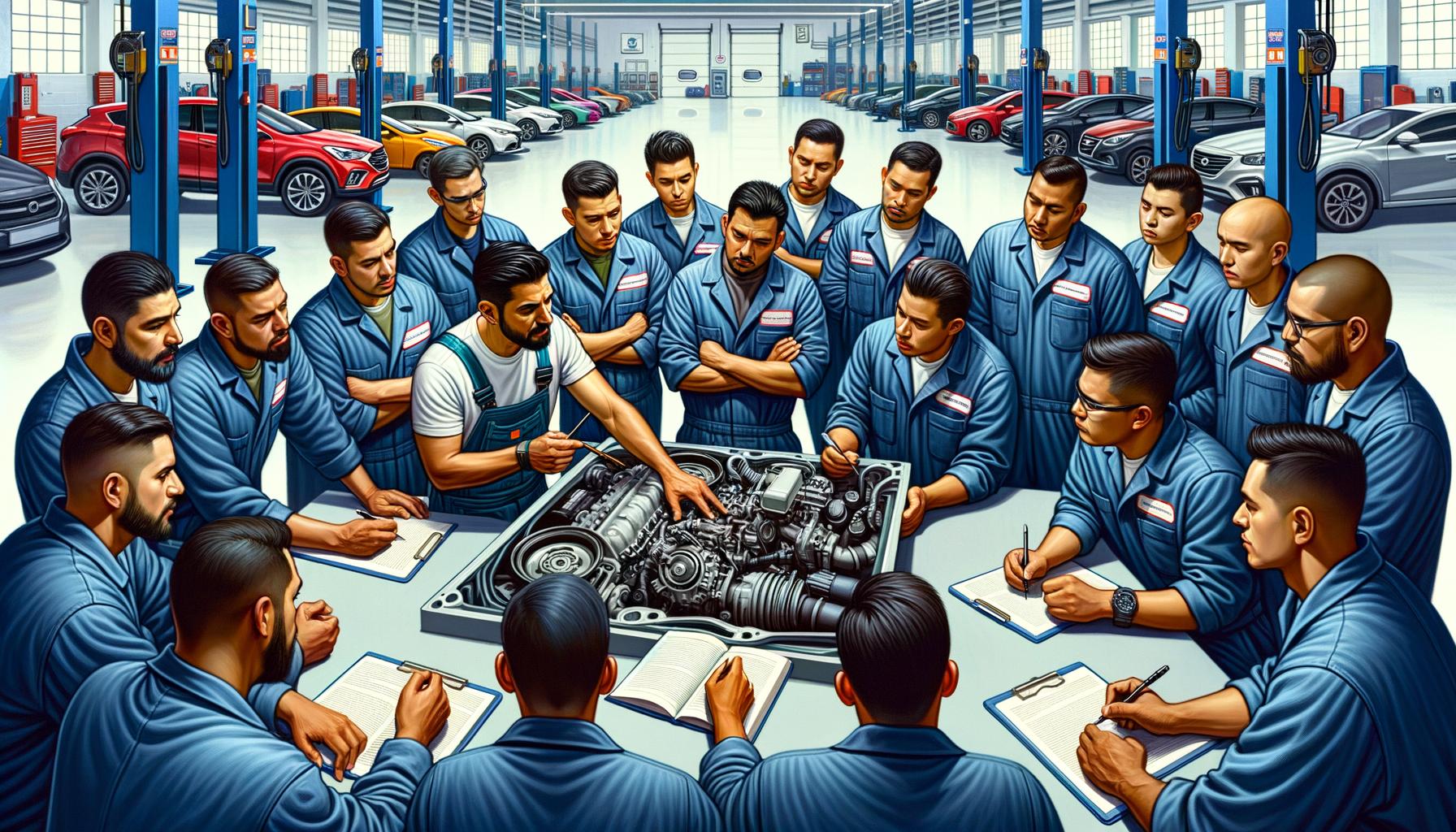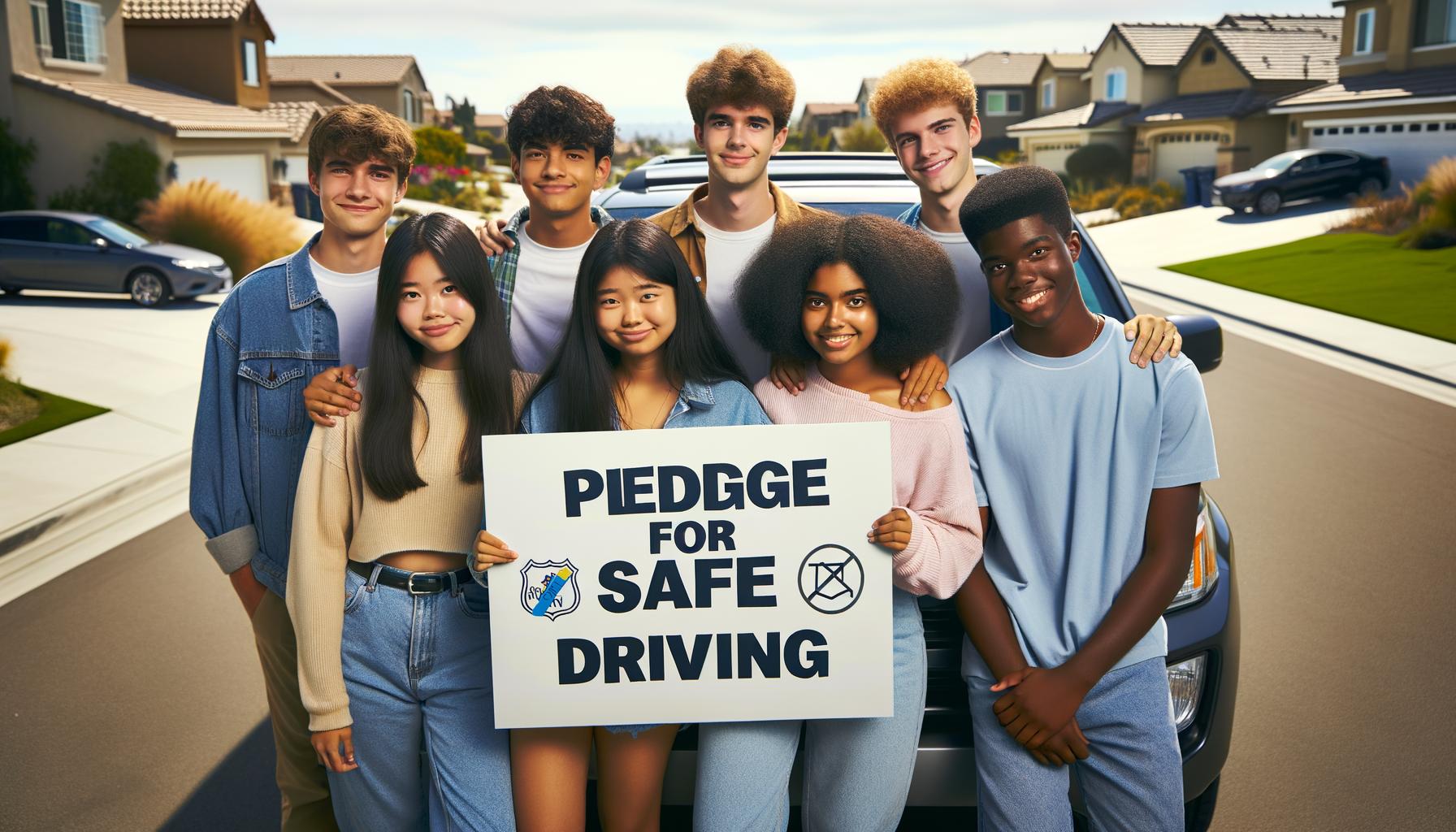How to Avoid Roadwork Hazards While Driving
Navigating through roadwork zones can be challenging and potentially hazardous. Mishaps in these areas increased by 8% last year, emphasizing the need for caution.
At The Wiser Driver Driving School, we believe preparation is key to tackling these situations safely. By staying informed and following essential safety practices, you can significantly reduce your risk on the road.
How Can I Stay Informed About Roadwork?
Staying informed about roadwork is essential for safe and efficient travel. Roadwork zones are unpredictable and can change traffic patterns suddenly, leading to confusion and potential danger. Mishaps in these areas increased by 8% last year, so it’s paramount to keep updated.
Utilize GPS and Traffic Apps
GPS and traffic apps are invaluable in navigating roadwork zones. Applications like Waze, Google Maps, and Apple Maps offer real-time updates on road conditions, mapping out detours, and alerting you to upcoming construction zones. These apps can help avoid roadwork hazards by suggesting alternative routes and even providing estimated delays. By using such tools, drivers can save time and minimize the risk of accidents.
Local News and Radio Updates
While technology is incredibly useful, don’t overlook traditional sources of information. Local news stations often have dedicated traffic segments that update drivers on ongoing roadwork and expected delays. Radio stations provide live traffic updates that can help you understand the immediate situation on your commute. Listening to these updates during your drive can give you a heads-up on any unforeseen road conditions.
State and Municipal Websites
State and municipal websites are treasure troves of information when it comes to roadwork. Websites of the Department of Transportation (DOT) often feature dedicated sections for roadwork updates, including detailed maps and timelines. Municipal websites may also provide updates on local construction projects. For instance, the Maryland Department of Transportation offers comprehensive updates on state-wide roadwork and possible detours. Regularly checking these sources can keep you well-informed and prepared for any changes in your usual routes.

Safe Driving Practices in Construction Zones
Driving safely in construction zones is not just about protecting yourself—it’s also about safeguarding the workers who are often mere feet away from moving traffic. With over 20,000 workers injured annually in road work zones, adopting strict safety practices is non-negotiable.
Follow Posted Speed Limits
Speed limits in construction zones are not suggestions; they are essential for safety. Data from the Federal Highway Administration shows that driving at reduced speeds can decrease the severity of crashes. When you see a lower speed limit posted, it’s there because navigating the area at normal speeds may be unsafe due to lane shifts, sudden stops, and the proximity of workers. Studies reveal that reducing speed to posted limits in work zones can minimize fatal crashes by as much as 25%.
Maintain a Safe Distance
Tailgating is dangerous in any circumstance, but in construction zones, it becomes even riskier. The National Safety Council emphasizes maintaining ample distance not just from the vehicle in front but also from construction equipment and workers. A gap of at least three seconds behind the vehicle ahead gives adequate reaction time to sudden stops or shifting traffic patterns. Trucks and equipment often enter and exit work zones; staying vigilant can make a life-saving difference.
Stay Alert for Workers and Equipment
Attention to detail can prevent accidents in these environments. According to the Occupational Safety and Health Administration (OSHA), the main causes of worker fatalities in construction zones include runovers and backovers by vehicles and equipment. Avoid distractions like mobile phones and keep an eye out for workers who may be close to moving traffic. It’s also vital to look for construction equipment that might be entering or exiting the work site unexpectedly. High-visibility clothing isn’t just for workers; it’s also a critical cue for drivers.

By following these guidelines, you not only adhere to legal requirements but also contribute to a safer driving environment for everyone. For more safe driving practices and tips, consider exploring other resources that focus specifically on traffic safety.
Handling Unexpected Roadwork
When encountering unexpected roadwork, it’s vital to react promptly and safely. With the increase in work zone crashes, being prepared for sudden changes in road conditions can make all the difference.
Recognize Warning Signs and Signals
First, it’s essential to recognize and understand the warning signs and signals near construction zones. Orange signs, cones, and flashing lights indicate a work zone and potential hazards ahead. The Federal Highway Administration recommends that all road users pay close attention to these notices as they often signal lane closures, reduced speed limits, and shift patterns. Ignoring these signs can lead to accidents, particularly when workers and heavy equipment are involved.
Maneuver Safely Around Lane Closures
Navigating around lane closures requires vigilance and precise driving. It’s vital to merge as soon as you see warning signs indicating a lane closure. Waiting until the last moment can create bottlenecks and heighten the risk of accidents. The American Association of State Highway and Transportation Officials advocates for the zipper merge technique, where drivers take turns merging at the point of the lane closure. This method can reduce traffic congestion and improve safety.

Additionally, reduced lane widths and close proximity to work areas necessitate careful maneuvering. Stay within your lane boundaries and avoid any sudden lane changes to prevent collisions with barriers or nearby vehicles.
Communicate with Other Drivers
Clear communication with other drivers is paramount in construction zones. Use your turn signals well in advance to indicate lane changes or merges. This simple action can minimize confusion and help maintain the flow of traffic. Eye contact and hand signals can also convey your intentions when close to other vehicles. Remaining calm and patient, especially in slow or stop-and-go traffic, can prevent needless accidents.
For more detailed information on roadwork safety, check out our safe driving practices post.
Wrapping Up
Navigating through roadwork hazards requires preparation and awareness. Utilizing GPS and traffic apps, staying updated with local news and radio, and regularly checking state and municipal websites ensure you remain informed about any roadwork impacting your routes.

When driving through construction zones, following posted speed limits, maintaining a safe distance, and staying alert for workers and equipment are key practices. Ensure to recognize warning signs and signals, maneuver safely around lane closures, and communicate effectively with other drivers.
Preparation and vigilance go hand-in-hand to create a safer driving environment. To further enhance your driving skills, consider exploring the programs offered by The Wiser Driver. We provide comprehensive courses tailored for all ages, including defensive driving and personalized lessons to boost confidence and safety on the road.
















































